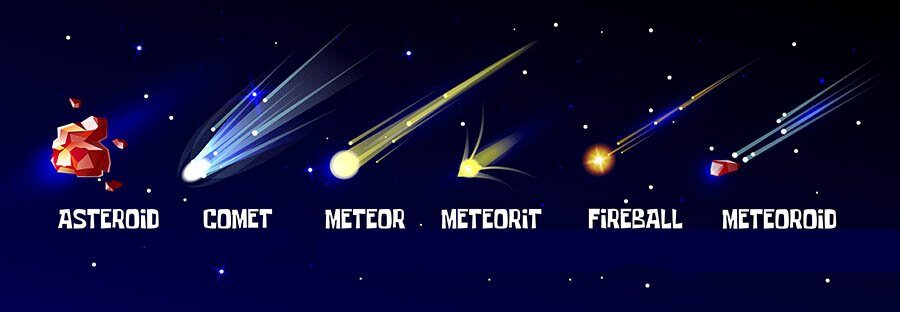10 Comet Facts | How They’re Different
Many people aren’t exactly sure what a comet is. You might hear about a comet that’s passing Earth that you’ll be able to see in the next days or weeks – but what exactly is a comet? And how does it differ to the other objects up there in the night sky?
The truth is that although comets look like they may be quite a complex object, they’re quite simple. So, let’s look at that and more in these facts about comets.
- A comet is made up of rock, ice, dust and some frozen gases like carbon dioxide.
- As a comet gets closer and closer to the Sun, obviously the ice on it will start to melt away, as well as dust. This dust then created what is called a coma, which is a cloud around the center of the comet.
- The solar winds released from the Sun then push against the comet, which is why a comet forms a tail behind it.
- We generally credit Gottfried Kirch as the first person to discover a comet with his telescope.
- However, it wasn’t until the late 1800s that American astronomer Edward Emerson Barnard became the first person to take a picture of a comet.
- The name comet comes from the Latin word Cometa, which literally means “long-haired” – this is in reference to the long tail of the comet.
- As of 2020, there are more than 6,600 different known comets within our solar system.
- Comets come in all different shapes and sizes. Whilst some of them are only a few meters in diameter, some comets are more than a few kilometers!
- The majority of comets are named after the person that discovers them. They may also be named by year.
- We generally split comets but the amount of time they take to orbit the Sun. A short period comet is less than 200 years, whereas a long period comet could take a million years!
Essentially, comets are just balls of ice and gas that are orbiting the Sun, like us, just at a greater distant. All comets originate beyond Neptune, so you can imagine how cold it is out there. That means that they are originally a trans neptunian object, though to become a comet, they don’t stay that way forever.

But whereas a planet orbits the Sun in a more spherical shape, a comet will orbit the Sun in a much more oval pattern. This means that they continue their orbit in a oblong fashion, and when they get closer to the Sun, they begin to burn and create a tail and a coma, which is the gas surrounding the comet.
However, although some comets repeat their same orbital pattern, if a comet gets too close to the Sun, it can get overwhelmed by its gravitational pull. This comet will then go hurtling towards the Sun, to its death.
Yes, comets do actually orbit the Sun like the planets and other objects within the Sun’s region of gravitational pull. However, comets typically have a more elongated, oval shaped orbit in comparison to the planets, which orbit the Sun in a more spherical manner.
Whilst comets are typically made of ice and rock, an asteroid is made up of primarily rock and metals. Comets originate further out in the solar system, whereas asteroids are located in the Asteroid belt, which lies between Mars and Jupiter.
The name of the most famous comet is called Halley’s comet. This comet is visible to the Earth every 75 years, with the last time being in 1986. Ancient recordings of this comet have been noted throughout the past thousands of years, within many different cultures from the Chinese to the Babylonians. It takes it’s name from English astronomer, Edmond Halley.
When we’re examining a comet, we generally split the comet into four different parts. This is it’s nucleus at it’s center, it’s coma (the gas surrounding it), it’s gas tail and it’s dust tail – this is why you’ll see astronomers say that a comet has two tails, one of dust and one of gas.
Comets generally come from two different places. Some of them are located in the Kuiper belt, which is a ring around the Sun that is just past the planet Neptune. Other comets come from the Oort cloud, which is even further out than the Kuiper belt.
To sum it up, whilst some comets may continue for a long time in the same elliptical orbital pattern, many comets will come in just too close to the Sun. This will then pull them out of the orbital pattern, and the comet will get sucked into the Sun and die! Hopefully you’ve learned some interesting facts about comets.